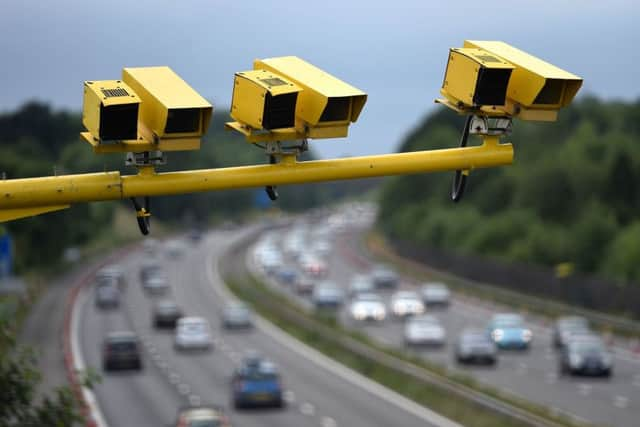UK cars set to have new devices which stop drivers breaking speed limit
The Department for Transport (DfT) said new EU rules that have been provisionally agreed would apply to the UK despite Brexit.
Intelligent speed assistance (ISA) is one of a raft of safety measures set to become mandatory in European vehicles after the plans were given approval by the European Commission.


Advertisement
Hide AdAdvertisement
Hide AdIt is claimed the changes could help save more than 25,000 lives and avoid at least 140,000 serious injuries by 2038.
Road safety charity Brake described it as a “landmark day for road safety”, but the AA said the “best speed-limiter is the driver’s right foot”.
ISA prevents vehicles from speeding by limiting engine power, but the system can be overridden or temporarily switched off.
Speed limits are detected using a sign-recognition camera and GPS technology.
The approved mandatory safety features for cars, vans, trucks and buses also include a warning of driver drowsiness and distraction, such as when using a smartphone while driving, and a data recorder in case of an accident.
Devices for lane-keeping assistance, advanced emergency braking and crash-test improved safety belts are suggested for cars and vans, while the legislation also addresses drink-driving, making it easier to retrofit an alcohol interlock device - used in a number of EU member states to tackle repeat drink-driving.
A DfT spokesman said: “These interventions are expected to deliver a step-change in road safety across Europe, including the UK.
“Intelligent Speed Assistance systems are expected to give drivers feedback when the speed limit is exceeded rather than limiting the speed, much like satellite navigation does now.”
Advertisement
Hide AdAdvertisement
Hide AdEU Commissioner Elzbieta Bienkowska said the “vast majority” of fatal road accidents are caused by human error.
“We can and must act to change this,” she said.
“With the new advanced safety features that will become mandatory, we can have the same kind of impact as when safety belts were first introduced.”
Joshua Harris, director of campaigns for Brake, said: “These measures will provide the biggest leap forward for road safety this century, perhaps even since the introduction of the seatbelt.
“These life-saving measures come at a vital time, with road safety in a concerning period of stagnation with more than 70 people still being killed or seriously injured on British roads every day.”
Brake urged the Government to commit to adopting the regulations in the UK, no matter what happens with Brexit.
The DfT said vehicle safety measures generally relate to technical standards set by the United Nations Economic Commission for Europe, and the UK’s relationship with this body will be unaffected by Brexit.
The political agreement on the new safety measures has yet to be formally approved by the European Parliament and Council.
This process could take several more months due to European Parliamentary elections in May, according to the European Transport Safety Council.
Advertisement
Hide AdAdvertisement
Hide AdAA president Edmund King said: “There is no doubt that new in-car technology can save lives and there is a good case for autonomous emergency braking to be fitted in all cars.
“When it comes to intelligent speed adaptation, the case is not so clear.
“The best speed-limiter is the driver’s right foot and the driver should use it to do the right speed in the right situation.”
